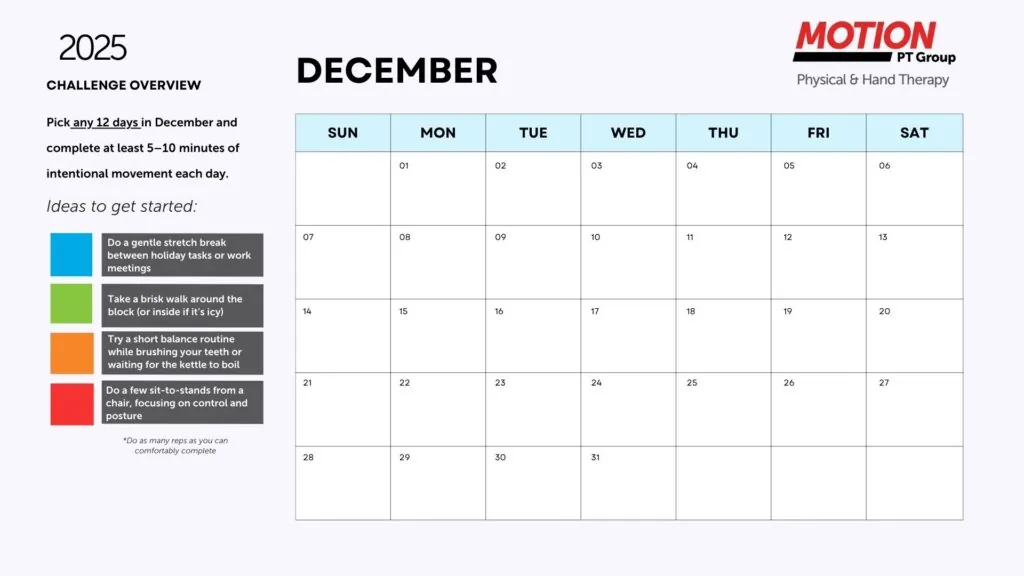Behind every tailored exercise plan and MOTION therapy session, there’s a wide variety of tools designed to help patients regain strength, coordination, and functional abilities. Whether it’s recovering from surgery, managing chronic conditions, or overcoming injury, these tools are the building blocks that assist therapists in restoring quality of life.
Let’s take a deeper dive into the essential tools therapists use, from high-tech devices to simple aids, and how each plays a unique role in the healing process.
Therapeutic Exercise Equipment
Exercise is at the heart of most rehabilitation plans. We use a range of equipment to promote movement and build strength, flexibility, and endurance. Some common tools include:
- Resistance Bands: These elastic bands are portable, versatile, and come in varying levels of resistance. They’re often used to improve strength and mobility in muscles and joints without putting undue stress on them.
- Exercise Balls: Used to enhance balance and core stability, exercise balls challenge patients to maintain control, improving coordination and core strength.
- Treadmills & Stationary Bikes: Ideal for cardiovascular conditioning and building endurance, these machines help patients ease back into regular movement.
- Balance Boards: Balance boards or wobble boards help patients regain balance and coordination, particularly after lower extremity injuries.
Manual Therapy Tools
Not all healing happens through exercise. Manual therapy, including massage and joint manipulation, is often crucial for pain management, reducing inflammation, and improving joint mobility.
- Massage Balls and Foam Rollers: These tools help release tight muscle knots and improve flexibility by applying pressure to specific areas of the body.
- Graston Technique Tools: These stainless-steel instruments are used by PTs to perform soft tissue mobilization. They help break up scar tissue and fascia restrictions, improving mobility and reducing pain.
Modalities for Pain Relief
Pain can be a major barrier to progress, so physical therapists use various modalities to ease discomfort and promote healing.
- Electrical Stimulation (E-Stim): This device uses electrical impulses to stimulate muscles and nerves, which can help reduce pain, increase blood flow, and promote healing.
- Ultrasound Therapy: High-frequency sound waves penetrate deep into tissues, promoting circulation and reducing inflammation in muscles and joints.
- Heat and Cold Therapy: Hot packs relax tight muscles, while cold packs reduce swelling and inflammation. These simple yet effective tools are often used in the early stages of recovery.
Assistive and Adaptive Devices
For occupational therapists (OTs), helping patients regain independence in daily activities is a top priority. They rely on a range of assistive devices to help patients adapt to their physical limitations.
- Adaptive Utensils: People with limited grip strength or dexterity, such as those with arthritis or after a stroke, benefit from utensils with larger, easier-to-hold handles, making eating more manageable.
- Reachers and Grabbers: These extendable tools allow patients to pick up items from the floor or reach high shelves without straining their back or legs.
- Splints and Braces: Often custom-made, splints and braces support weak or injured joints and muscles, preventing further injury and promoting healing.
- Wheelchairs and Walkers: These mobility aids help individuals move safely and comfortably while maintaining independence. Therapists train patients to use these devices effectively in different environments, from home to public spaces.
Sensory Integration Tools
For some patients, especially children or those with neurological disorders, occupational therapy involves sensory integration. This therapy helps individuals who struggle with processing sensory information, such as touch, sound, or movement.
- Weighted Blankets and Vests: These provide calming pressure to individuals with sensory processing issues, helping them feel grounded and focused.
- Therapy Swings: Designed for children with sensory processing disorders, therapy swings provide a safe environment to experience movement, helping them develop better balance and coordination.
- Tactile Toys and Tools: Items like stress balls, textured mats, and fidget tools are used to engage the senses and improve fine motor skills.
The tools we use are more than just instruments—they’re lifelines that empower patients to regain control over their bodies and their lives. Whether it’s mastering a simple task with an adaptive device or building strength with advanced technology, these tools help break down the barriers to recovery. And with each session, we guide our patients closer to their goals, one step, one stretch, one breath at a time.
At MOTION, we know that recovery is a journey, and with the right tools in hand, they’re equipped to help every patient reach their destination. If you or a loved one are in need of rehabilitation, reach out to us today and discover the power of personalized therapy tools for yourself!




